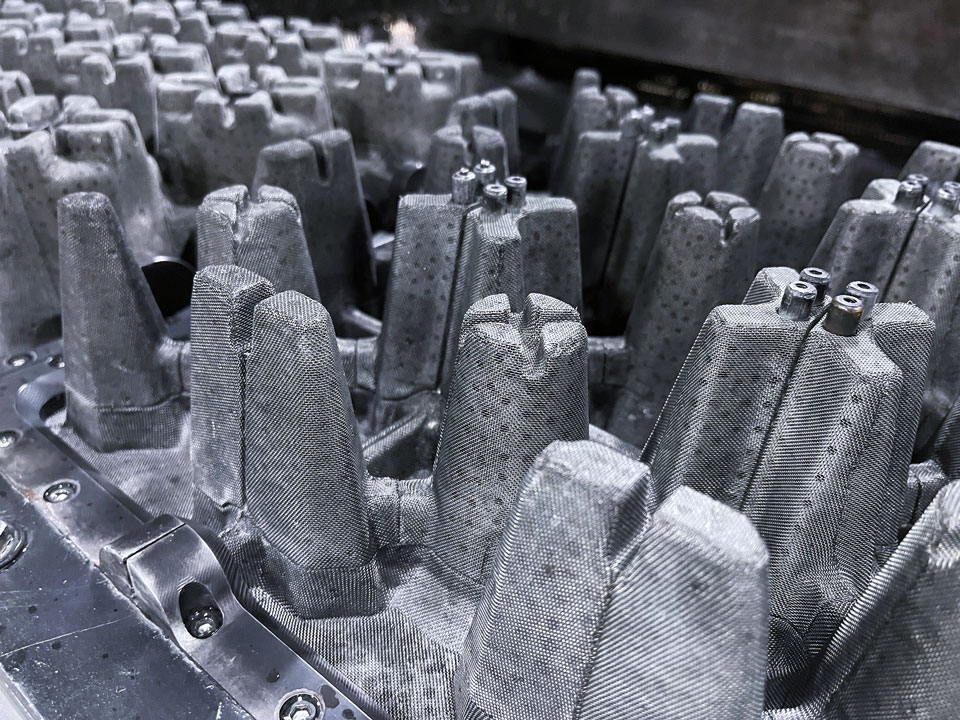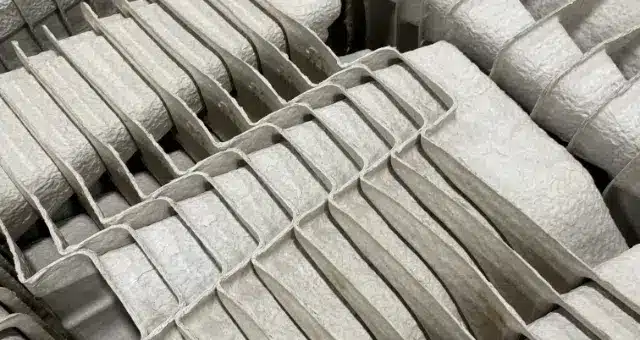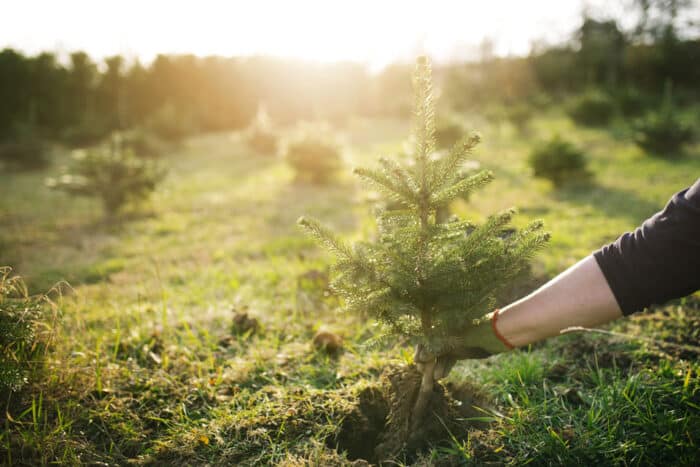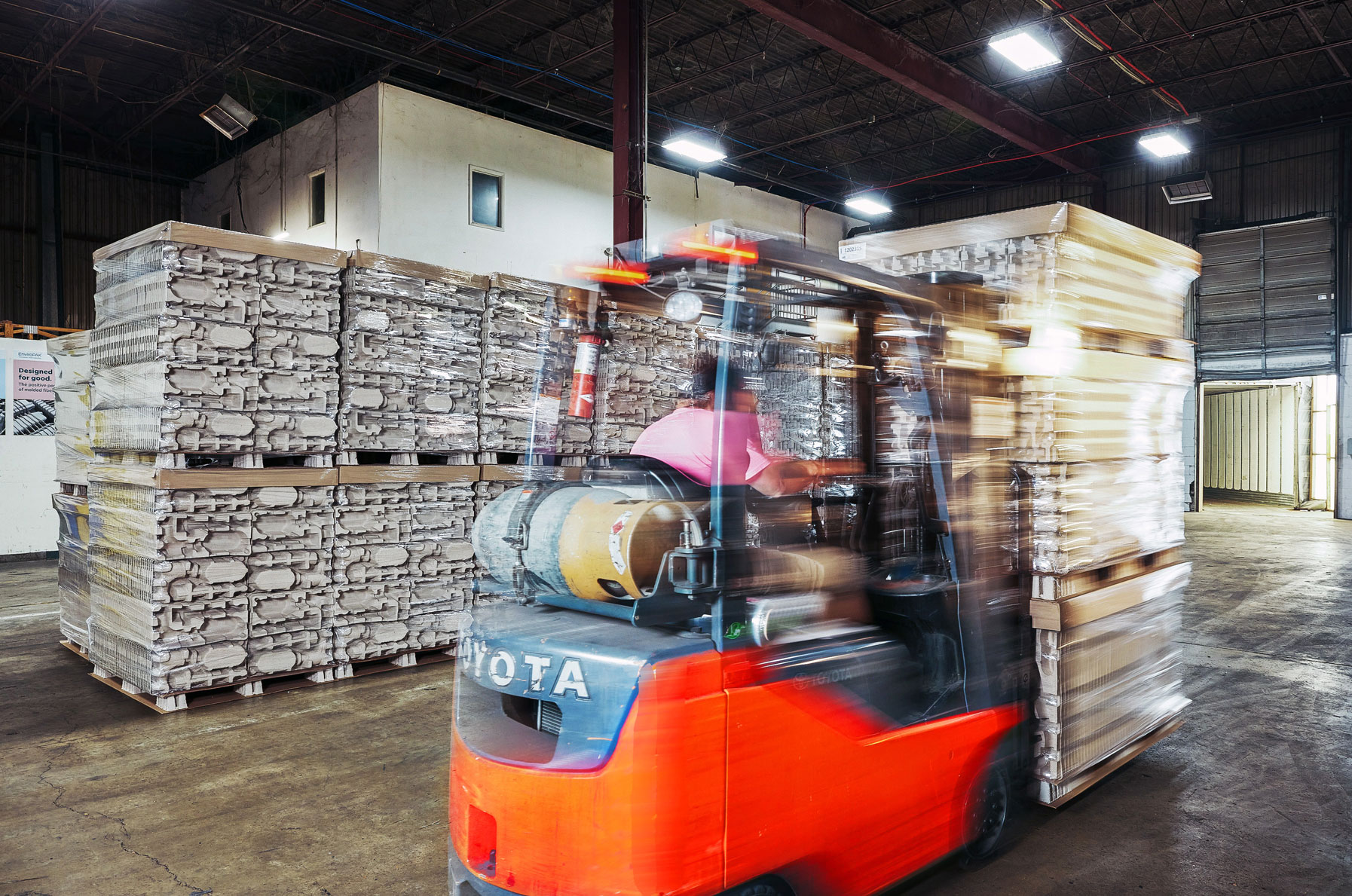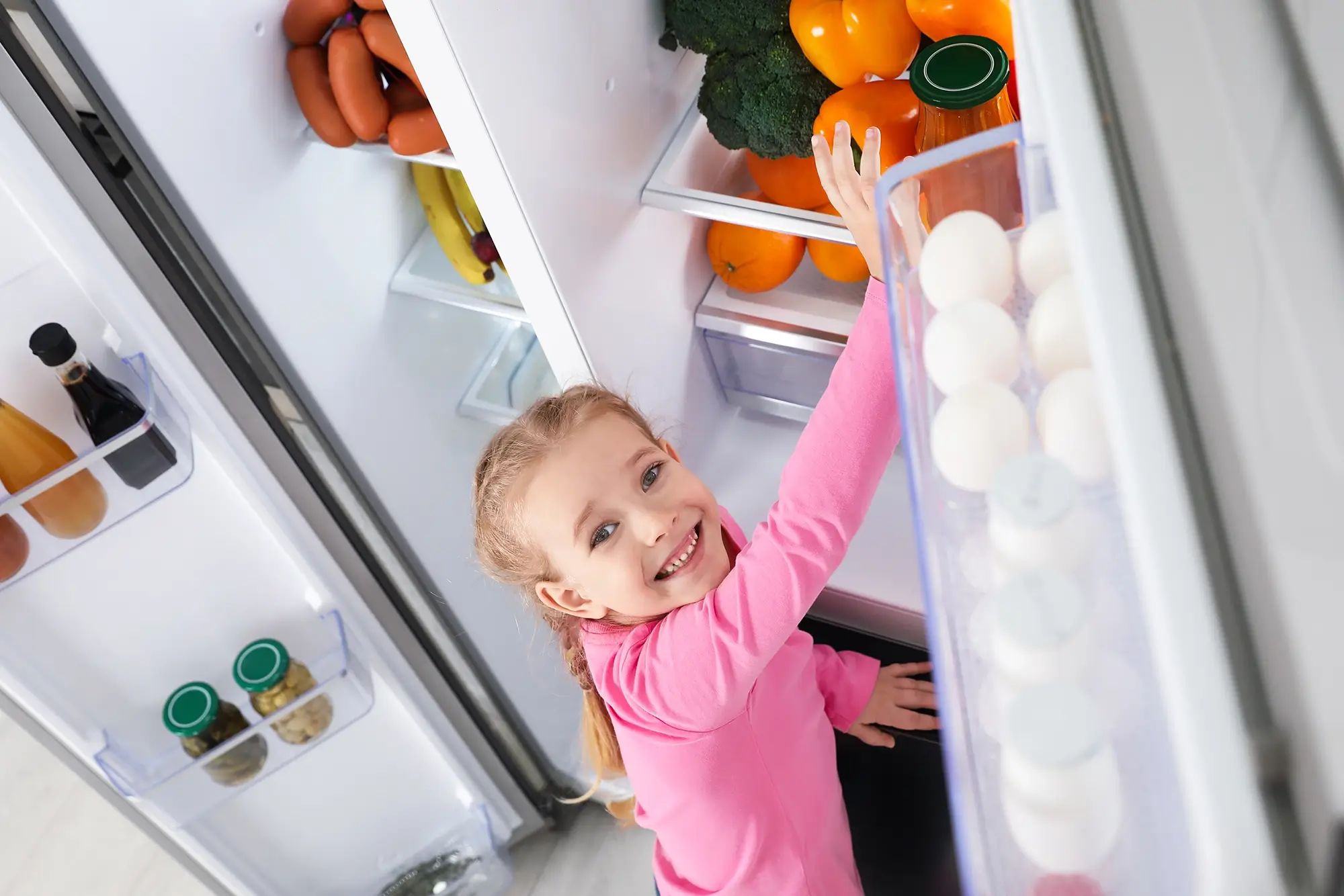In the United States, “white goods” are associated with large household appliances such as refrigerators, washing machines, dryers, dishwashers, and stoves. Painting these appliances white became a common manufacturing step in the 1980s as homeowners sought out more minimalist design options and a look that created warmer room environments. Thus, the term “white goods” became a household name.
While the white color presents a clean home environment, the energy required to operate these appliances has had a negative history on the outdoor environment. But that is changing as today’s eco-conscious consumers are shopping for more energy efficient, environmentally green appliances. This is one key reason why appliance manufacturers are ensuring their brands align with the green buyer mindset as reported by the Business News Daily:
“66% of all respondents and 75% of millennial respondents say that they consider sustainability when they make a purchase. Customers now align themselves with brands that are compatible with their values and priorities.”
The same research indicates 72% of consumers are actively buying more environmentally friendly products than they did five years ago, while 81% said they expected to buy even more over the next five years.
Engineered for good.
Buying energy efficient appliances is definitely on the minds of consumers looking to make purchases they feel are good environmental choices. You see this trend in the purchase statistics of smart appliances for use in smart homes. Not only do these appliances offer the required functionality for everything from washing clothes to keeping foods cold, but through technologies such as AI they can be operated with maximum energy efficiency to preserve our natural resources.
What’s good for the forests, oceans, and the air we breathe is also good for smart appliance brands. This segment is rapidly expanding, with almost 17 million U.S. users in 2023, which averages to be about 13% of U.S. households that own a smart appliance. This number is estimated to reach 581.1M user households worldwide by 2028.
“There’s a shift in consumer buying,” states Jessica Long, Managing Director of Strategy and Sustainability at Accenture. “More consumers willing to pay extra for environmentally friendly products which reinforces the need for companies to increase their commitments to responsible business practices. Companies across industries have started to lead with purpose, including embracing the circular economy as a greater opportunity to drive growth and competitive agility.”
A clear change is in the air.
As regulations on reducing CO2 emissions and plastic use are becoming the new normal in the United States, manufacturers are moving to greener manufacturing processes as they engineer more eco-friendly appliances – all to create lasting appeal for consumers and the planet. This is seen in the increased energy efficiency of modern appliances according to the Association of Home Appliance Manufacturers:
- A modern refrigerator uses half the energy it did just 25 years ago ago (that’s less energy than a 60‐watt incandescent light bulb)
- Clothes washers of average efficiency can save a household more than 5,000 gallons of water and more than $150 in utility costs compared to a 10-year-old washer
- Clothes washers hold 40% more volume than they did in 2000, while using less water
- The average amount of water used in a dishwashing cycle is down more than 44% since 2005
What’s even more impressive is how engineering is creating more sustainable appliance options that have resulted in, on average, “ … dishwashers that yield less than half the greenhouse gas emissions as washing dishes by hand, mostly thanks to heating less water,” as reported in the Washington Post.
Plastic packaging pollution laws are good for white goods.
In a statistical analysis of white goods conducted in 2024 by Consumer Affairs, it was reported that in 2022, the global household appliance market surged to over $680 billion in sales, with the U.S. emerging as the largest market valued at about $58.5 billion. Between 2024 and 2028, the value of the U.S. household appliances market is projected to increase by 12.81% to just under $70 billion.
In this same report California was listed as the state with the highest number of household appliance manufacturing facilities at 59. Not only is California’s economy the 5th largest in the world (with a nominal GDP of nearly $3.9 trillion in 2023 and a growth rate of 6.1%) it has some of the most stringent environmental regulations in place. These same laws cover sustainable packaging that appliance manufacturers fall under, too.
California Governor Gavin Newsom recently signed SB 54 into law to address the impacts of plastic packaging. The “Plastic Pollution Prevention and Packaging Producer Responsibility Act” shifts the plastic pollution burden from consumers to the industries, such as appliance manufacturers, that produce and use plastic packaging within the state. It also impacts manufacturers that utilize packaging for product shipping to California.
Under the new law it requires all packaging in the state of California to adhere to the following mandates/requirements:
- Must be recyclable or compostable by 2032
- Must cut plastic packaging by 25% over 10 years
- Requires 65% of all single-use plastic packaging to be recyclable during the specified timeframe under SB 54.
One viable and proven solution to all this is to utilize packaging manufactured with molded fiber. This material solution is biodegradable, compostable and meets the required packaging laws set by SB 54.
What’s more, this green legislation regulates recyclability labels in California and prohibits the use of the “chasing arrows” symbol, or any other recyclability claim on packaging, unless it’s recyclable to 60% or a higher level by 2025. This poses a real challenge for many packaging options, but one that molded fiber passes. It also creates a producer responsibility organization (PRO) to run a statewide collection-and-recycle program, with regulatory oversight, for printed paper and packaging.
“The [Plastic Pollution Prevention and Packaging Producer Responsibility Act] is the first circular economy bill in the world,” according to Heidi Sanborn, founding executive director of National Stewardship Action Council.
Washing machines are cleaning up landfills.
When you think of washing machines the one brand that often comes to mind is Whirlpool. Statista lists the company at number one in washing machine ownership by brand with 16% of all sales as of December 2023 (Maytag is listed at 9% and Kenmore is at 8%).
In addition, Fortune Magazine ranks the company second in 2023 in their home equipment and furnishings listing of the “World’s Most Admired Companies.” Whirlpool achieved this result, in part, for many green reasons.
With 55 manufacturing facilities, 59,000 employees, and $19 billion in annual sales, Whirlpool appliances garner an average of $19 billion in annual sales. What Whirlpool is accomplishing in sales is in direct correlation with what they are doing to achieve brand loyalty from consumers. The difference? They put a lot of innovative energy into engineering washers that save energy.
“The average clothes washers manufactured by Whirlpool today use nearly 78% less energy than those built in 1992. While energy usage is reduced, the washing capacity has increased by 60%.” – Whirlpool 2023 Sustainability Report
These appliances are also manufactured more sustainably than ever before in facilities that use less energy and water and generate less waste.
Eco-friendly packaging solutions represent the other side of their sustainable commitment to consumers. Whirlpool is fully focused on responsibly sourcing sustainable packaging materials from their vendors, and increasing transparency around materials used in their packaging, as highlighted in their 2023 sustainability report:
“We are collaborating with our suppliers to launch expanded polystyrene (EPS)-free packaging for select products in the KitchenAid line by 2025. We continually seek ways to replace non-recyclable packaging and other disposable materials with more sustainable solutions. We work with suppliers to propose design enhancements and suggest alternative materials. We continue to research and develop alternatives to traditional single-use plastic packaging.”
The packaging materials and vendors the company utilizes can have a positive impact on the environment, and their sales, as they strive to achieve the following:
- Eliminate non-recyclable packaging
- Make product transparency a focal point in our supply base through supporting and facilitating FMD
- Launch expanded polystyrene (EPS)-free packaging for select products in the KitchenAid line by 2025.
Doing right for the environment. It starts with the right packaging.
Caring for the environment is a mission that Electrolux takes very seriously. And their eco-conscious consumers align with what their brand represents. As a manufacturer of leading white goods brands such as Westinghouse as well as Frigidaire refrigerators and ovens, the company sees the benefits of eco-friendly appliances first hand in their bottom line:
“Sustainability helps drive good business results – with the Group’s most energy and water efficient products accounting for 24% of total units sold and 39% of gross profit in 2022.” – Vanessa Butani, VP Group Sustainability, Electrolux.
Sustainable packing is another area that Electrolux believes is just as important, as Maria Chiara Frijia, as Electrolux Sustainable Materials Innovation Expert points out:
“We are looking into more sustainable packaging solutions that are cost-effective and provide excellent protection, while reducing environmental impact, promoting circularity and decreasing carbon emissions.
We’re also redesigning our packaging to reduce the total amount of packaging we use as well as building a solid supply base and sourcing materials with a lower carbon footprint.”
The change to more sustainable packaging today is going to help Electrolux in the future. Especially since consumers are making buying choices based on the green initiative of brands. While consumers are ensuring these changes through their purchasing habits, environmental protection laws are also guiding the way brands look at their packaging material options. According to Ella Rudebeck, Electrolux Global Packaging Manager:
“Shifting to more sustainable packaging will be a must in the future and means we must keep ahead of any stricter legislation that may be introduced on non-sustainable packaging in the future.”
Giving the green light to going green is making a positive difference we can all embrace. And sustainable packaging is a great place to start.
Contact EnviroPAK to learn why custom molded fiber packaging is the positive, sustainable direction for the environment and the appliances your customers demand in 2024 and beyond. Our molded fiber packaging is made from 3,500 tons of recycled paper yearly. And it’s the ideal sustainable, biodegradable, and compostable solution to protect your products and your brand image with consumers.

